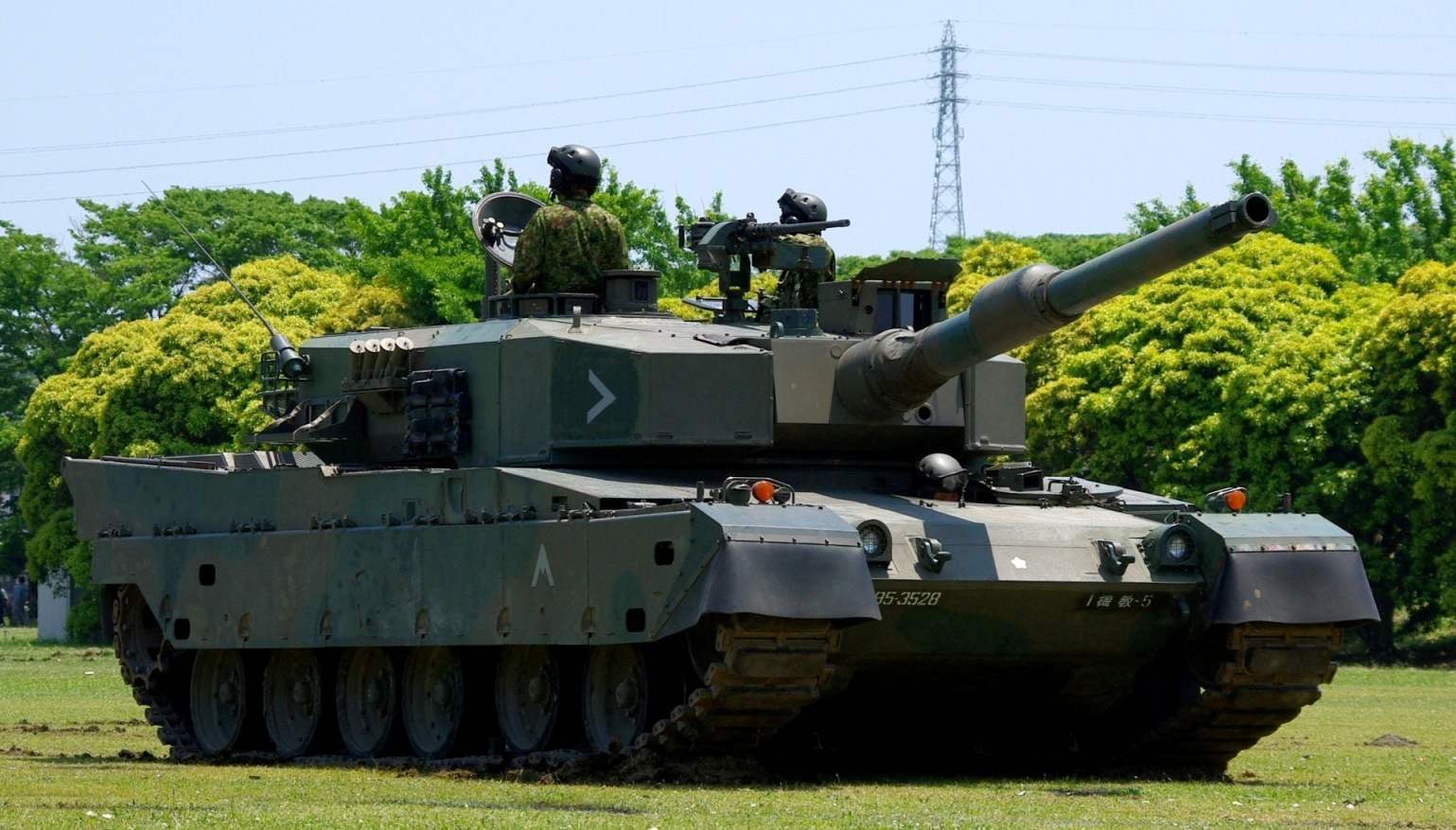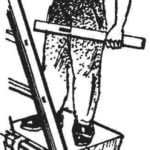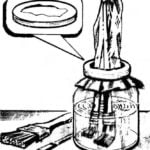 The self-defense forces — the so officially called armed forces of modern Japan. In accordance with the Potsdam Declaration in 1945, the Japanese army was disarmed and demobilized. 30 November of the same year he dissolved the military and naval Ministry, with all their subordinate organs.
The self-defense forces — the so officially called armed forces of modern Japan. In accordance with the Potsdam Declaration in 1945, the Japanese army was disarmed and demobilized. 30 November of the same year he dissolved the military and naval Ministry, with all their subordinate organs.
In the Constitution of Japan, adopted in 1947, article 9 reads: “Sincerely seeking international peace based on justice and order, the Japanese people forever renounce war as a sovereign right of the nation and the threat or use of force as means of settling international disputes. To achieve the goal mentioned above, will never be created, land, sea and air forces, as well as other war potential. The right to conduct a state of war is not recognized”.
However, this provision has never been interpreted too rectilinearly in January 1950, the commander of American occupation forces, General Douglas MacArthur in an address to the Japanese people said that Japan has “the right to self-defence”. A few months later, on 8 July, in accordance with his order began the formation of the police reserve corps, numbering 75 thousand people. The prisoner in 1951 the Japanese-American Treaty (safeguards) of the security, stated that “Japan will itself increasingly assume the responsibility for its own defense against direct and indirect aggression.” In August 1952, the Japanese government has transformed the police reserve corps in case of national security and has increased its membership to 110 thousand people. In September 1953 on the basis of this case began creating self-defence Forces. This name, received on 1 July 1954, is reserved for the Japanese armed forces to the present day.
Finally, the structure of the Japan self-defense Forces was formed in 1976 and since then has not undergone significant changes. Supreme commander is the Prime Minister, in which there is an Advisory body, the national security Council and the direct control of the troops and fleet Manage national defence (UNO) and the joint chiefs of staff with the relevant staffs of the armed forces. The main governing body in this system is the UNO, headed by a civilian the head of Department in the rank of Minister of state. The SDF consist of ground, air and naval units. Land is the most numerous. They are 148 thousand. They consist of the five armies, 13 divisions (including one tank), several teams (including one airborne) and a number of parts of the Central submission. On the armament of the land forces is more than 1000 tanks, 2000 artillery pieces and rocket launchers, about 500 aircraft and helicopters.
The only Japanese 7th tank division is considered the main striking force of ground troops. It is intended for a counterattack, and to cover the flanks of the infantry divisions and other tasks. The division has seven regiments (three armored, mechanized infantry, artillery, air defense artillery, logistics), three battalions (reconnaissance, engineering, communication) and two companies (headquarters, army aviation). The number of staff of about 7,000 people. Weapons: over 200 tanks, 200 armored combat vehicles, up to 70 field artillery pieces and mortars. The division is stationed in Hokkaido and subordinated to the army command “North” — the largest and most efficient in the self-defense Forces.
Armored vehicles is in service and other units. Thus, the composition of each infantry division has a tank battalion with up to 60 combat vehicles.
In the 1950-ies, at the initial stage of construction of the self-defense Forces, their weaponry consisted mainly of American military equipment, including light tanks M24 and M41 as well as medium — М4АЗ and M47.
However, in 1954, Japan began development of own medium tanks of the first post-war generation. From 1957 to 1962, he was made a few prototypes under the indexes from ST-A1 ST-A4. In their design continued the tradition of pre-war Japanese tank development related to the installation of a diesel engine air cooling at the rear with the front wheels, on the other hand, it is obvious that the prototype in the design was the American M47 tank, which consisted at that time armed with Japanese self-defense Forces. When you develop your own fighting machine was taken into account and a Japanese specificity. Due to the fact that Japan is a mostly mountainous country with a small number of plains, the main attention was paid to the maneuverability of the tank. It was also necessary to make it lighter and smaller because of limitations imposed by the nature of the road network, low load-carrying capacity of most bridges and the fact that the Railways of the country have a reduced track width. In determining the size of the tank was also taken of the fact that the Japanese are predominantly small growth.
In 1962 a new medium tank was accepted into service under the brand name “61”. He was in serial production from 1962 to 1972. During this time the firm Mitsubishi Heavy Industries manufactured the 560 military vehicles.


Main battle tank “90”:
1 — 120-mm gun; 2 — ejector; 3 — rail; 4 — 12.7 mm anti-aircraft machine gun; 5 — unit smoke grenade launchers; 6 — wind speed sensor; 7 — cart for the rig; 8 — driving wheel; 9 — support roller; 10 — guide wheel; 11 — the commander’s cupola; 12 — combined periscope sight commander; 13 — laser range finder; 14 — periscope day night sight of the gunner; 15 — antenna input; 16 — recess of the telescopic sight; 17 — recess 7.62 mm coaxial machine gun. The rear view of the anti-aircraft gun is not shown
Tank “61” has a layout with a front transmission and a rear — engine, welded hull and cast turret with well-developed fodder niche. The crew consists of four people. The driver is in the front of the case right; the rest of the crew, commander, gunner and loader in the turret. A tank commander has a rotating turret, equipped with a stereoscopic optical rangefinder on the turret mounted large-caliber antiaircraft machine gun Browning М2НВ. 90-mm rifled gun “61” Japanese production equipped with T-shaped muzzle brake and ejection device for purging the barrel. Ballistic characteristics of the gun are the same as the American M41, M47 installed on the tank. With gun paired 7.62-mm machine gun Browning М1919А4. Gun ammunition consists of 50 rounds, 4000 rounds of 7.62 mm and 525 rounds of 12.7 mm.
Drives turret and pointing guns in the vertical — electro-hydraulic, and backup — manual. Stabilization system cannon is missing.
The tank also lacks a system of protection against weapons of mass destruction and equipment, OPVT. Some machines are equipped with night vision devices.
Mounted on the tank 12-cylinder V-shaped air cooling turbo diesel Mitsubishi 12 NM 21WT output of 600 HP at 2600 rpm and five-speed manual synchromesh gearbox allow 35-ton fighting machine to develop a speed of 45 km/h. cruising range reaches 200 km.
The chassis of the tank “61” is applied to the individual torsion bar suspension. In the scheme of the suspension of the two front and two rear rollers are telescopic hydraulic shock absorbers. Caterpillar steel with rubber hinge and removable pads. Like a caterpillar, and standardized track rollers with caterpillars and rollers tank M47.
On the basis of “61” was developed and manufactured commercially launched bridge “67”, sapper tank “67” and BRAM “70”.
As of 1999, the Forces had another 40 medium tanks “61”, which was used mainly for training purposes, or were in storage.
The development of a new medium tank was developed by Mitsubishi Heavy Industries in 1962 and took place in the framework of the program, providing for the strengthening of the new machines Park of tanks “61”, then complete replacement. After seven years of research and development work in September 1969 was made the first two prototype, ST-B1. They take into account for that period all the then achievements of world of tank development, and implemented a variety of original designs of Japanese designers: the automatic loader guns, remote control system anti-aircraft machine gun, a new hydromechanical transmission, hydropneumatic suspension rollers and much more. Until 1973, was made a series of prototypes from ST-to ST B1-B6 which design as designing all the more easier. On the arms of the Japanese self-defense Forces tank adopted in 1975 under the designation “74”, in the same year began the serial production. From 1975 to 1991 produced 873 units.
The layout of the tank “74” is a classic, aft location motorostroitelnoe office. Unlike tank “61”, “74” driver-mechanic located in the bow of the hull to the left. Housing welded from rolled armor plates, the tower — cast a hemispherical shape, resembling the towers of Soviet tanks and German tanks turret of the AMX-30 and “Leopard-1”. The maximum thickness of the frontal armor of the body is 110 mm, the angle of inclination of the front plate to the vertical — 65°. All parts and systems of the tank — national development, in addition to 105-mm gun L7A3, manufactured under licence The gun has a concentric recoil device and is stabilized in two planes. Pointing the gun at the target and shooting can be done by the tank commander and gunner. The complex sighting devices include tank combination (day/night) periscope sight commander, in which a built-in laser rangefinder on ruby with measurement capability from 300 to 4000 m, the main combined periscopic gunner’s sight J-3 and auxiliary articulated telescopic monocular gunner’s sight. Night devices — active type, highlighting is performed using a xenon searchlight mounted to the left of the cannon. Ammunition tank consists of 55 shots, 4,500 rounds of 7.62 mm and 660 rounds of 12.7 mm.
Tank “74” is installed two-stroke diesel 10-cylinder V-engine air-cooled Mitsubishi 10ZF 22WT, turbocharged. Its power is 720 HP (529 kW) at 2200 rpm. In the rear of the tank in a single unit with the engine placed mechanical planetary transmission MT Mitsubishi 75A with a friction gear shifts (6+1 ) and differential rotation mechanism. Suspension of the tank — hydropneumatic, adjustable, clearance varies from 200 to 650 mm, the trim of the hull ±6°, roll ±9°. The installation of the elastic suspension elements are made inside the enclosure. The tension of the tracks can be adjusted from the driver’s seat inside hydraulically tensioning mechanism. The tank is equipped with a system of OPVT, overpressure and automatic PPO.
The combat weight of the tank is 38 so the Maximum speed is 53 km/h cruising on the highway — 300 km. the Crew consists of 4 people. Limited capacity of the chassis and relatively small engine power was not allowed to upgrade the tank by raising the level of armor protection and the installation of more powerful weapons, as was done in most European countries and in the United States. However the tank “74” is still the backbone of the armored troops of the self defense Forces: as of 1999 in combat units was 873 tank of this type. In the slow entry into force of the new tank “90” this situation will continue in the near future.

Main battle tank “90” in summer camouflage painting. 1998

Main battle tank “90” of the 7th armored division during a training exercise at the site “Higashi Fuji”. Winter 1999
On the basis of the “74” was developed 155-mm self-propelled howitzer “75”, BRAM “78”, ZSU “87” and the bridge layer is “91”. The first three cars were mass-produced and are in service with defense Forces.
From 1976 to replace the tanks, “61” and “74” by Mitsubishi Heavy Industries developed a new tank under the designation ST-C. participated In the design of the German Krupp-MaK and Krauss-Maffei AG, created the Leopard tanks. Not surprisingly, adopted in 1989 and adopted the main battle tank 90, which has a significant resemblance with the tank Leopard-2.
The hull and turret of welded armor layered, spaced, with extensive use of ceramic elements. Upper frontal hull is at a very high angle to the vertical, while the frontal and the side plates of the tower does not have any angles. Protection of the casing is reinforced of anti shaped-charge screens.
A two-axis stabilised 120 mm smoothbore gun of the German firm Rheinmetall manufactured in Japan under license by the firm Japan Steel Works, can shoot all ammunition of this calibre was developed in Germany and in the United States. For loading the guns used machine with the use of mechanized boeukladki located in a niche of the tower, and holds 20 rounds. The latter circumstance, the Japanese, apparently, considered good enough grounds for elimination in the crew loader. However, they are not alone.
Developed by Mitsubishi Electric, the fire control system is one of the most advanced in the world. It includes an electronic ballistic computer automatically takes into account correction for the target speed, crosswind, range to target, the roll of the gun trunnion axis, air temperature and atmospheric pressure, speed own tank and barrel wear. Manually it will be corrected for the temperature of the charge and type of shot. In addition, the system includes: a two-axis stabilised panoramic periscope sight commander with night thermal imaging and a laser rangefinder and two of the gunner’s sight: stable in one plane periscopic night sight with thermal channel and an auxiliary articulated telescopic sight monocular.
In addition to the gun to the complex weapons of the tank 90, which included two machine guns: coaxial with the gun gun “74” 7.62 mm anti-aircraft machine gun М2НВ 12.7 mm mounted on the turret roof between the hatches commander and gunner. On the sides of the tower at the stern mounted a six smoke grenade launchers “73” caliber 60 mm. Ammunition includes 40 rounds, 4,500 rounds of 7.62 mm and 660 rounds of 12.7 mm When fired from a 120 mm smoothbore cannon used featherless armor-piercing tracer projectiles with a detachable tray and multipurpose anti-tank shaped charge projectiles with poluchayemyye sleeves.
Mounted on the tank 10-cylinder two-stroke V turbo diesel liquid-cooled Mitsubishi M-12ZG capacity of 1500 HP at 2400 rpm allows 50-ton vehicle with a maximum speed of 70 km/h. Good performance of mobility and are provided with hydromechanical transmission with locking torque Converter, automatic planetary gearbox (4+2) and the hydrostatic transmission in the drive of rotation.
Suspension consists of six rubber rollers on Board, three support rollers, drive wheel at the rear with a removable ring gear (cycloid gear) and idler wheel. Suspension — combined on the two front and two rear support rollers on each side mounted hydropneumatic actuators and the other of the torsion bars. The caterpillars have a metal running track, RMS and removable rubber pads.
The tank 90, which installed high-speed automatic system PPO, responsive to the IR radiation source of ignition and system of protection against weapons of mass destruction. There is a system warning receiver tank laser weapons.
The initial batch of new tanks was released in 1990, production is carried out since 1992. The total demand of the defense Forces in the tanks of this type is estimated at 400 — 500 units. As of 1999, the self-defense Forces was 172 tank of this type, as of January 1, 2004 — 240. In 2003 financial year it was ordered 18 of the tanks. It should be noted that, like most of the Japanese military programs, the development of the tank 90, which were very long, while production is slow, resulting in the cost of one machine is the highest in the world. However, according to foreign experts, the main battle tank “90” is in the top five best tanks in the world.
M. BARYATINSKY



